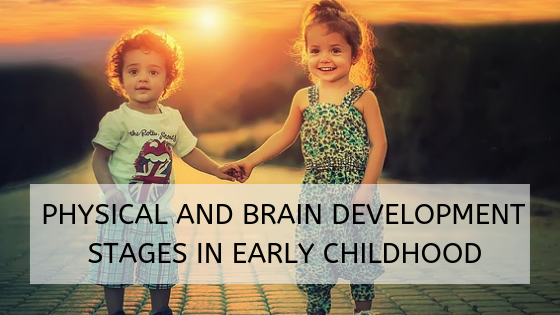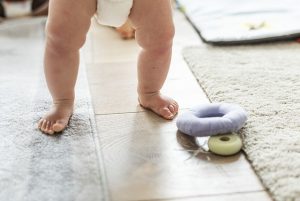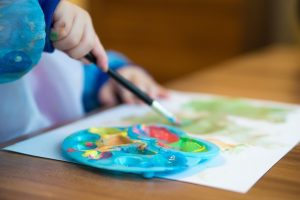
26 Mar Brain Development Stages of Early childhood : The Early Superpowers
It’s a delight watching your child grow. Isn’t it?
When they walk, get potty-trained, babble out more and more words, you heave a sigh of relief. Relief because your child is growing at an optimal pace.
The age of 2-6 years, also called the early childhood is special. Special because the physical and brain development in early childhood is very integrated. That means children grow at a slower and steadier rate after 2 years as compared to infancy.
Let’s see the different physical and brain development stages in the early childhood years.
Physical Development Stages
Physical development means your child is preparing to take on the structural build similar to that of an adult.
Here’s how!
1. The child begins to crawl, sit and hold up the head by the age of 2
2. Loses the chubbiness of an infant and gains a leaner and athletic look by the age of 3
3. The arms and legs grow longer and will be proportionate to the trunk and the head
4. Abdominal muscles develop further to tighten the appearance of the stomach
5. By the age of five, children can be double their birth length. Also, boys reach half of their adult height by two years and girls by 19 months.
6. Between 1- 6 years, the child gains about 2 kg weight per year.

7. A child acquires the following gross motor skills between 2-4 years:
● Walking with a steady balance
● Running comfortably in a single direction or around obstacles
● Throwing a ball or catching one
● Hoping on each foot several times
● Jumping over objects or low-lying hurdles
● Kicking or bouncing a ball
● Pedalling a tricycle
8. Also acquires fine motor skills such as
● Using the spoon and utensils
● Brushing teeth or combing hair
●Picking up small items like coins
● Assembling simple puzzles
● Jumping over objects or low-lying hurdles
● Kicking or bouncing a ball
● Pedalling a tricycle
- Also acquires fine motor skills such as
- Using the spoon and utensils
- Brushing teeth or combing hair
- Picking up small items like coins
- Assembling simple puzzles
- Drawing simple shapes like circles or squares
- Stacking up blocks

- Writing letters of the alphabet
- Get all of their milk/deciduous teeth by 2-3 years of age
-
Brain development stages
Nervous system and brain development in early childhood continues to be dramatic.
From birth to their fifth year, children develop the skills for speaking, writing, walking, social interaction, self-awareness, and cognition.
- Structural development of the brain
At 3, the brain reaches 80% of the adult size. 90% of the child’s brain develops by the age of 5.
- The brain cells called neurons begin to form connections with each other at birth. From infancy to 3 years, the brain forms around 1,000 trillion synapses in response to the environmental stimuli like sight, sound, and taste.
- Every new experience creates a new connection in the brain from 3 years onwards. Thus, learning a language or symbols, and emotional development is critical during this period.
- Glial cells that support the nervous system by providing nourishment and removing waste from the neurons develop rapidly in toddlers and early childhood.
- Myelin sheaths surround and insulate the neurons and develop rapidly during early childhood.
Functional development of the brain
The various milestones in brain development stages are:

- Begins to smile at the parents by 6 weeks
- Focuses and follow the faces of others by 2-3 months of age. By 6 months, a child can see nearly as well as an adult. They can recognise bright colours, patterns and human faces.
- Babbles simple vowel sounds around 2 months of age. It’s a child’s way to exercise their vocal ability and explore the connections between language and its social function.
- Mimics the sounds around them by 5 months of age
- Responds to the calling out of their name between 7-12 months.
- Can follow simple instructions like “look here” and “pass the ball” by 8-12 months
- Between 8-12 months, a child can look/search for hidden objects which signals the development of their problem-solving and spatial awareness skills
- Can imitate facial gestures and other mannerisms by 1 year of age
- Begins to say simple words like “mama” or “papa” and recognise their mother tongue by 1 year of age, though pronunciation may not be clear each time.
- Become more aware about the self and can narrate stories by 2.5-3 years.
- Uses imaginative play scenarios like playing as a teacher or creating fanciful scenarios with toys by 3-4 years. This shows that they can now connect between the objects, people, places, and their own feelings.
- Children between 3-5 years can reason or use logic and differentiate what’s real and what’s an imagination.
- By 4 years of age, the child can understand other people’s emotions, and take part in a co-operative play.
With the knowledge of these physical and brain development stages in early childhood, you can now be sure about the normal growth of your child and what steps you need to take as a parent to ensure these happen on time.

No Comments